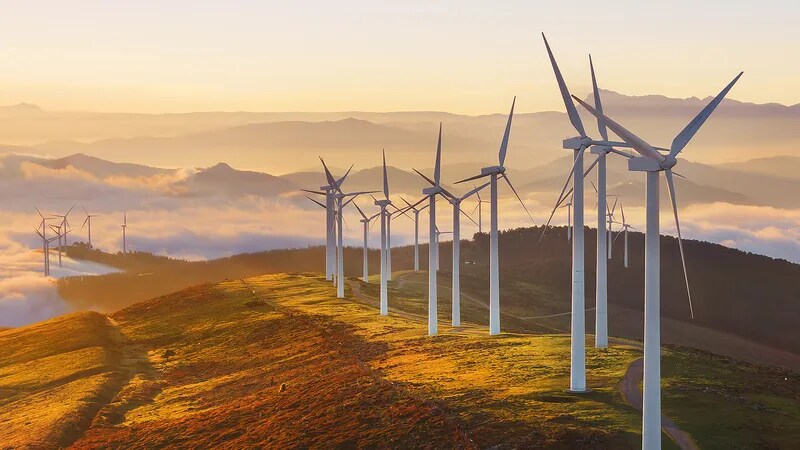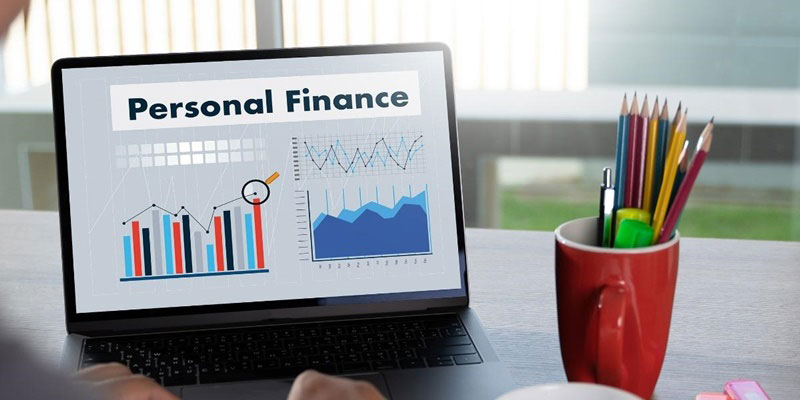Financial Considerations of Renewable Resources
May 19, 2024 By Triston Martin
The term renewable resources, when used in finance, refers to a range of assets and investments that are important for sustainable development and looking after the environment. It is very crucial for investors, policymakers as well as businesses to comprehend the financial effects of these resources. This article intends to clarify the financial marketplace linked with renewable resources by discussing definitions, key factors one should consider, and different kinds.
Understanding Renewable Resources

Financially, the term "renewable resources" relates to assets that come from sources that renew themselves naturally and can be used continually without getting exhausted. Unlike resources like fossil fuels which are limited, renewable ones can be filled up all the time through natural methods. This characteristic is what makes them have a financial value because they provide an ongoing chance for investment while also decreasing harm to the environment.
- Long-Term Sustainability: Renewable resources offer long-term sustainability, contributing to a resilient investment portfolio and reducing reliance on finite resources.
- Economic Growth: Investments in renewable resources stimulate economic growth by fostering innovation, job creation, and infrastructure development in renewable energy sectors.
Considerations for Financial Investments
Investment in renewable sources requires a mix of factors for making money and keeping the environment healthy. Things such as financial strength, rules set by authorities, improvements in technology, and changes within the market have a big effect on where we put our money, be it into renewable energy or sustainable farming among other sectors. Examining these elements aids those involved in carefully handling dangers while also grabbing beneficial chances in this growing renewable sector.
- Policy Stability: Stable regulatory policies and incentives are crucial for attracting investment in renewable resources and ensuring long-term financial viability.
- Technology Risks: Rapid advancements in renewable technologies necessitate a thorough assessment of technological risks and potential obsolescence in investment planning.
Solar Energy
Gathering sunlight using photovoltaic panels and solar thermal systems is a fast-growing path for investing in renewable energy. Solar farms and installations on building rooftops provide sustainable energy solutions, showing good results for those who put their money into this area of investment.
- Location: Optimal placement in regions with abundant sunlight ensures maximum energy generation.
- Storage Solutions: Implementing efficient energy storage technologies enhances reliability and grid integration.
Wind Power
Wind turbines, set in places with good wind flow, use the power of movement to make electricity. Projects that make wind power can be on land or in water and they offer chances to invest money into renewable energy areas which is profitable.
- Maintenance: Regular maintenance is crucial to ensure optimal performance and longevity of wind turbines.
- Environmental Impact: Assessing potential ecological effects, such as bird and bat collisions, is essential for sustainable wind power projects.
Hydroelectric Power
By using the natural power of flowing water, hydroelectric power plants make clean electricity. Money put into building and maintaining things like dams and turbines for hydroelectricity helps make more renewable energy and manage our water resources.
- Reservoir Management: Proper management of reservoirs is vital to mitigate downstream ecological impacts and ensure water availability.
- Sedimentation Control: Implementing sediment management strategies maintains the efficiency and lifespan of hydroelectric facilities.
Biomass Energy
Biomass, which comes from things like leftovers in farming and wood pellets, helps to make renewable energy. Biomass power stations and places that refine biofuel provide long-term choices for the use of energy and stimulate investments in the bioenergy sector.
- Feedstock Diversity: Diversifying biomass feedstock sources enhances resilience against supply chain disruptions and price fluctuations.
- Emission Controls: Implementing effective emission control technologies minimizes air pollutants and ensures compliance with environmental regulations.
Geothermal Energy

Using Earth's heat sources, geothermal energy plants make electricity and heat for different uses. Geothermal investments take advantage of the planet's thermal power to create steady and green power outputs.
- Exploration Risks: Conducting thorough geological surveys mitigates risks associated with exploration and drilling activities.
- Heat Extraction Techniques: Utilizing advanced heat extraction methods optimizes energy production and resource utilization.
Tidal Energy
Taking advantage of the gravitational pull from the moon and sun, turbines for tidal power make electricity using currents from tides. Projects that produce energy from tides show great possibilities in making renewable power but they also have certain requirements for location and difficulties with technology.
- Tidal Range Variation: Understanding tidal range variations is crucial for selecting suitable sites with optimal energy generation potential.
- Marine Ecosystem Impact: Assessing the impact of tidal energy projects on marine ecosystems ensures sustainable development and regulatory compliance.
Market Trends and Opportunities in Renewable Finance
The landscape of renewable finance is continuously evolving, driven by shifting market dynamics, technological advancements, and policy developments. Understanding current market trends and emerging opportunities is essential for investors, financiers, and policymakers to capitalize on the growth potential of renewable resources while mitigating financial risks. This section explores key market trends and identifies lucrative opportunities in renewable finance.
- Emerging Markets: Emerging economies are witnessing rapid growth in renewable energy investments, driven by increasing energy demand, supportive policies, and declining technology costs. Investors can leverage opportunities in these markets to diversify portfolios and achieve attractive returns.
- Energy Storage Solutions: The integration of energy storage solutions, such as batteries and pumped hydro storage, is gaining prominence in renewable finance. These technologies enhance grid stability, facilitate renewable energy integration, and unlock new revenue streams through ancillary services and demand response programs.
Conclusion
To end with, comprehending the money aspects of renewable resources is very important in promoting lasting development and tackling worldwide energy difficulties. By thoroughly examining meanings, main points to think about, and various kinds of these resources. Interested parties can make knowledgeable choices on where to invest their money, considering both financial returns as well as taking care of the environment. In short, if you have enough awareness about renewable energy sources, their types, and other attached details, you can invest your assets in them and get significant profits.
-
 Know-how Dec 14, 2023
Know-how Dec 14, 2023End of an Era: Bretton Woods and Its Profound Effect on Global Finance
Learn about the Bretton Woods System, a major economic framework that was ended in the 1970s. Find out how it was eventually collapsed.
-
 Mortgages May 19, 2024
Mortgages May 19, 2024Understanding Marketing Strategy and Its Importance
Learn about a marketing strategy, how it operates, and the best way to put it into action for your business's success.
-
 Know-how Oct 26, 2023
Know-how Oct 26, 2023Explain in Detail: What Is Auto Insurance Bodily Injury Coverage?
Bodily damage liability insurance covers the cost of treating anyone injured due to an auto accident in which you were at fault (not including yourself). This insurance might help pay for your defense if you are sued for damages. If you drive in a state that requires auto insurance, you should be sure your policy includes bodily injury liability.
-
 Know-how Dec 07, 2023
Know-how Dec 07, 2023How To Choose Personal Finance Software
Personal finance software helps you consolidate your financial data. Personal finance software helps you create and maintain a budget, examine your investments, and generate asset reports.
